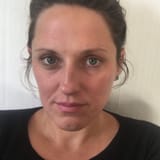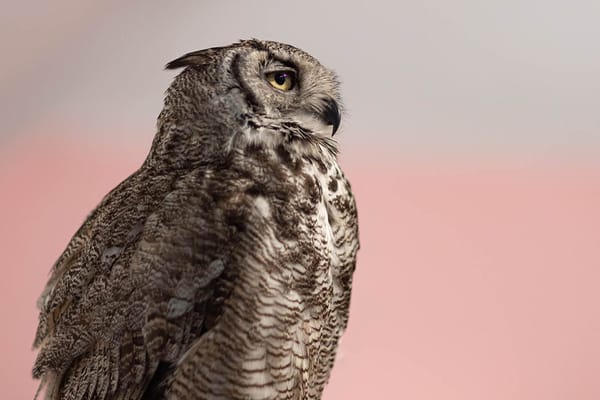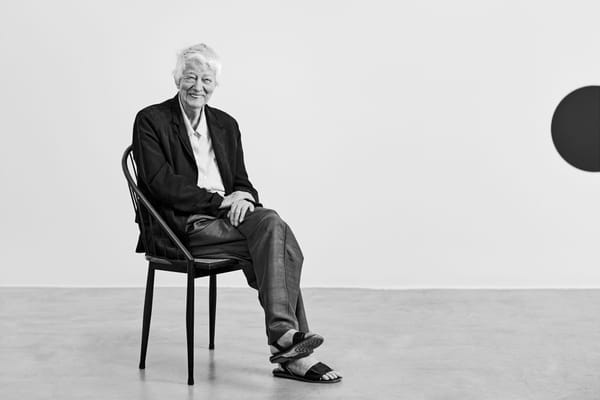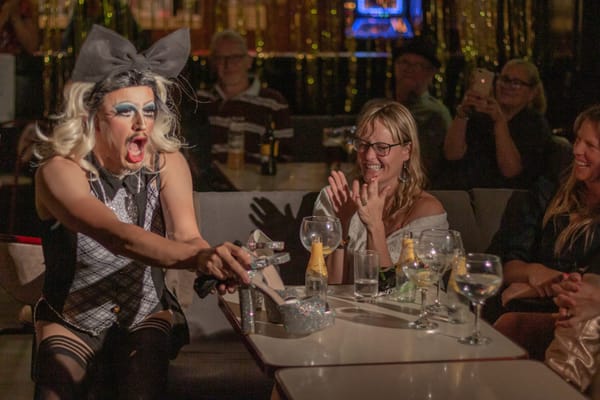Thanet art studio adapting creative processes for artists with additional needs
"I just like to get to know the person in front of me," says Sandra Hampton from Sandra Art4All studio on working with artists with special needs
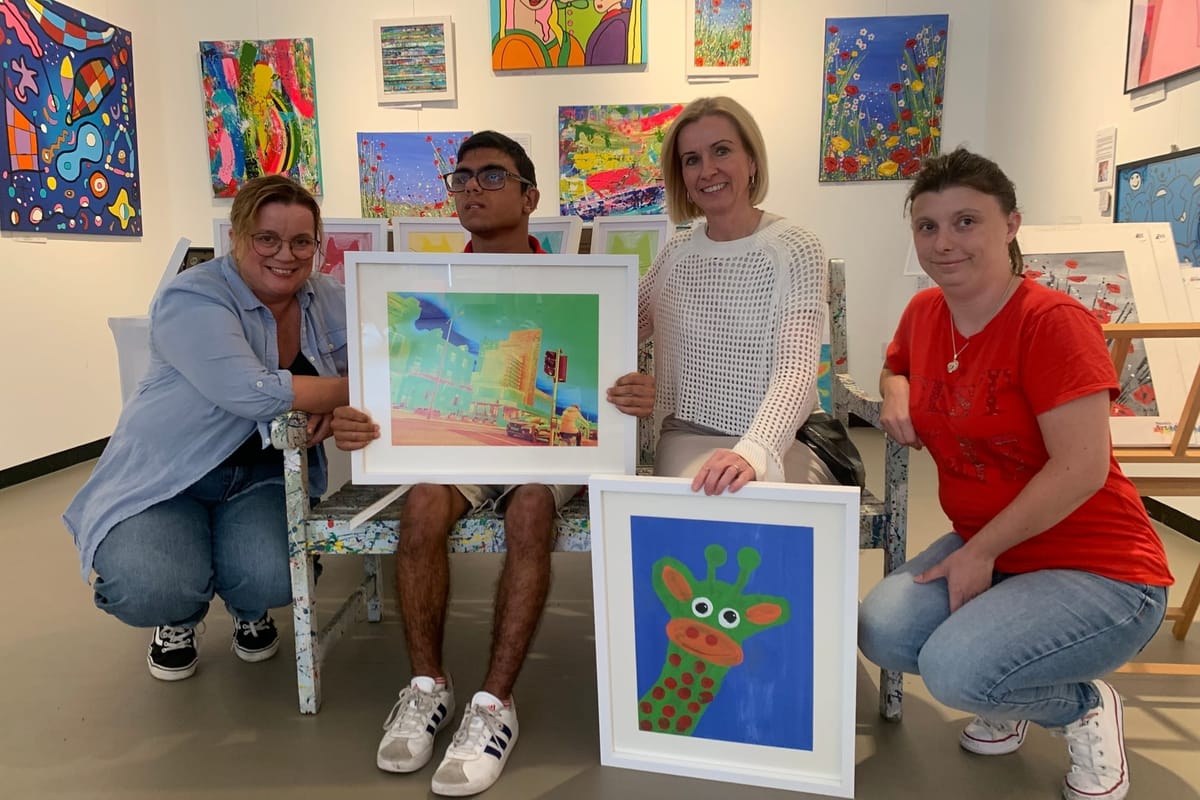
In August, I acquired a new artwork. An almost-goofy, utterly joyful portrait of a llama; its neck and head painted on to the canvas at an angle as if the surprised animal had poked its head into shot just to make me grin.
The llama was created by 15-year-old Dailbor, a Ramsgate resident who is profoundly deaf, has cerebral palsy, is visually impaired and non-verbal. Exhibited at Turner Contemporary and awarded by Royal Academy's Young Artist Summer Show in 2021 and 2022, the young artist is part of the Sandra Art4All studio, which held its annual exhibition at The Margate School last month.
Based in Acol, the art studio works with adults and young people who are neurodivergent or who have learning disabilities, with ages ranging between 14 and 40. Dailbor, also a keen self-taught photographer, has been part of the studio since he was four.
Sandra Hampton, the art teacher and artist who runs the studio remembers that even at such a young age, Dalibor’s talent and interest in art was apparent.
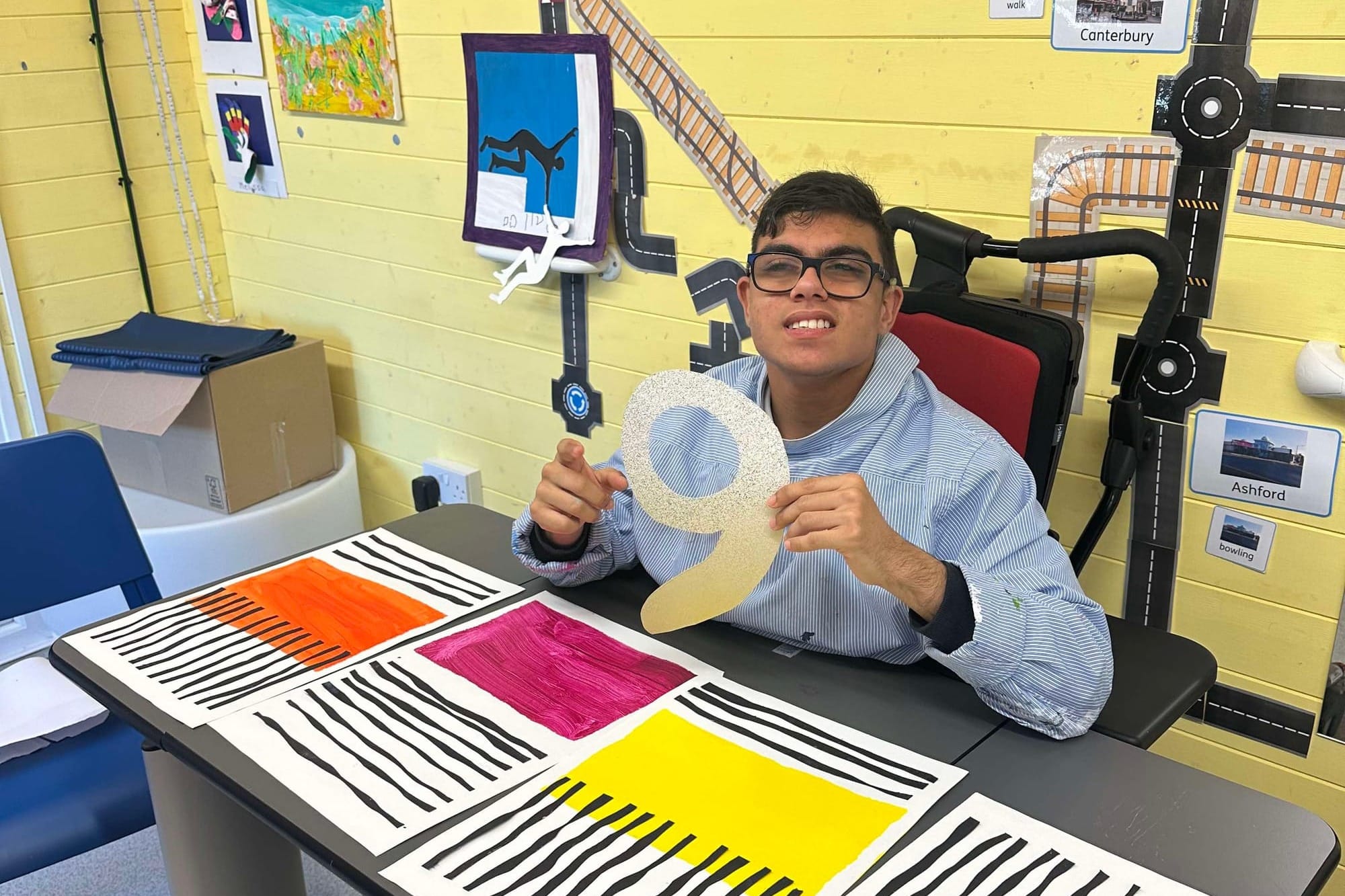
“He was so tiny,” she recalls. “When somebody can’t tell you what they like and don’t like at four years old, it’s all based on observations. You could see him clearly thinking about working out a drip-and-pin technique using an old pottery wheel. It’s a piece of string that you pull like a yoyo. It’s quite a difficult technique to get going and even though he didn’t master it then, he could do it.”
Dalibor, who has been homeschooled since The Royal School For The Deaf in Margate closed down in December 2015, works with Sandra for one hour a week. Supported by his teacher Naomi, these one-on-one sessions are either online or in person and see Dalibor often create paintings through a kind of tutorial set up, where Sandra models techniques and steps, which he then mirrors.
Key to these tutorials is creating “doable painting techniques”, says Sandra, who taught at the school for the deaf. This includes breaking down images into simple shapes and creating adapted painting tools - cardboard, stamps and balloons in yoghurt pots for example.
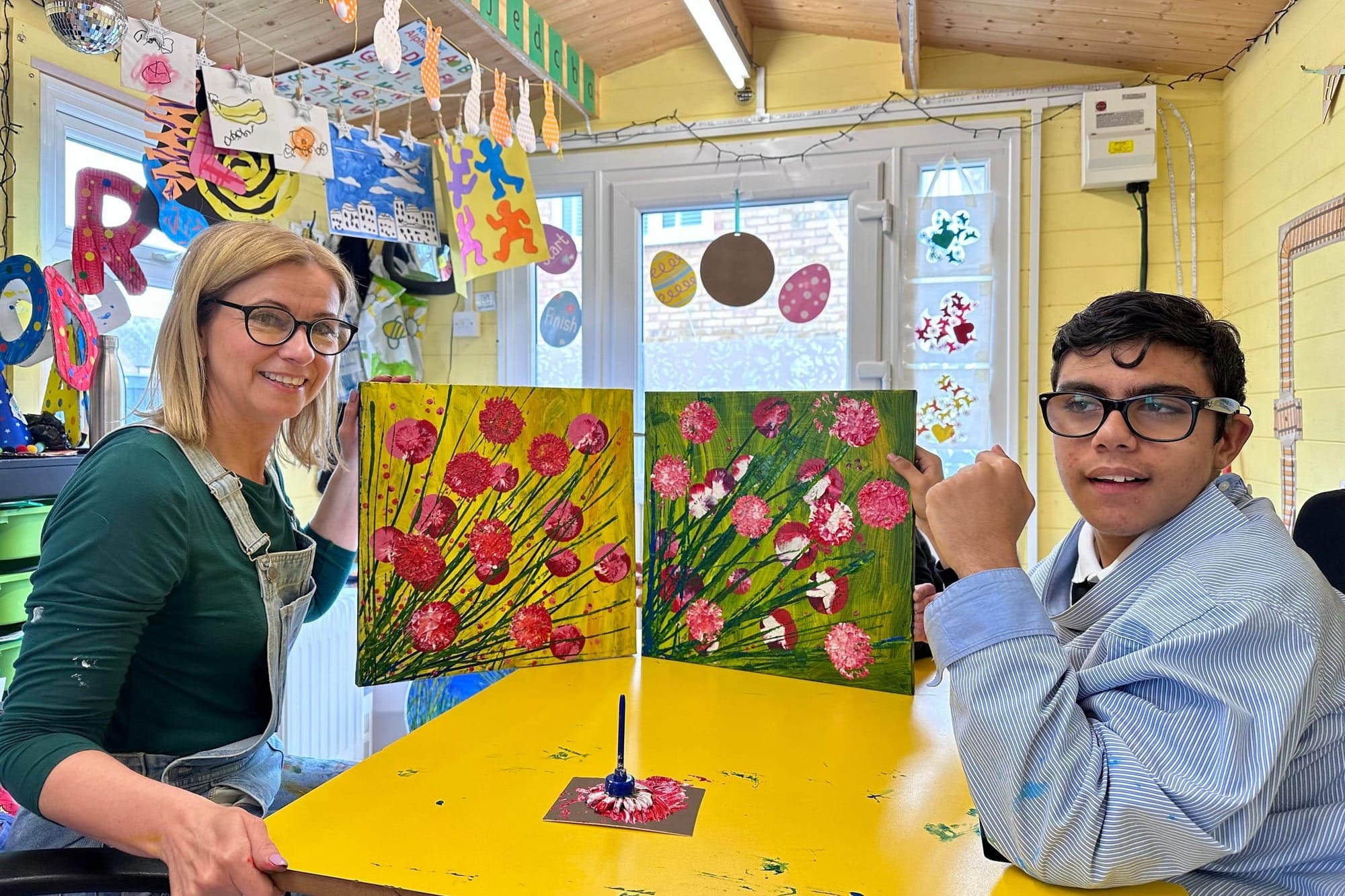
“Putting a balloon inside a yoghurt pot gives [studio participants] more control,” she says. “If you just grip a balloon it will just slide or move.
“I will physically go through all those tools and create art from them, so I can think ‘how is Dalibor going to manage this?’”
These tutorials can be guided or more free form, with Dalibor choosing techniques and textures. While his team may support him physically - a steadying hand to his elbow for example - so he has more control of the tool he is using, the aim is for Dalibor to be as independent as possible.
“It’s a team effort,” Sandra says. “It’s always about bringing back that level of very structured support and taking it a step further away.
“But that’s just one person,” she goes on. “For somebody else, it’s a completely different way of working together.
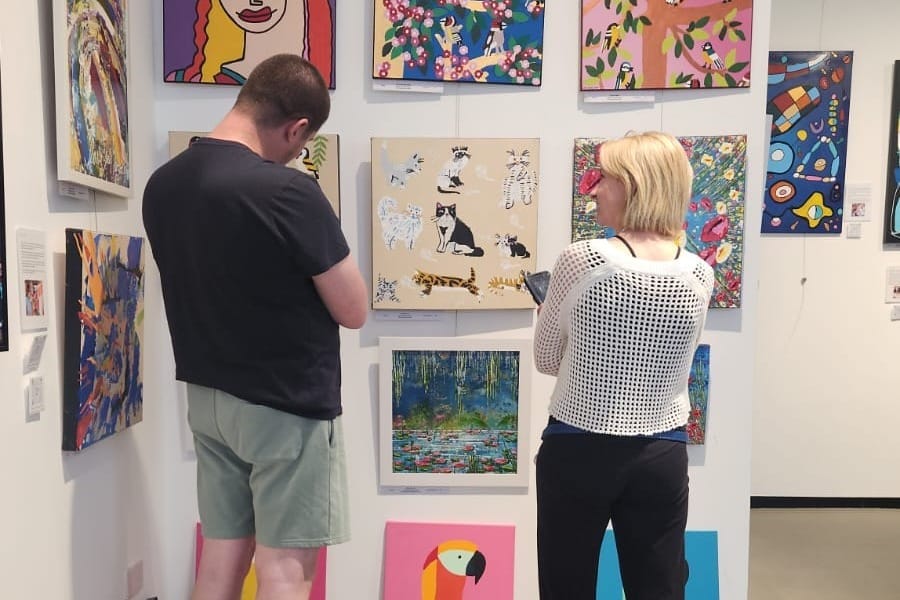
There is a range of learning needs, communication needs, abilities and interests between the 11 studio members, with some artists able to verbally communicate, while others can’t. With such a spectrum, Sandra tailors the creative process to the individual and adapts to how the person is feeling on the day.
“When you work at a specialist school, it’s second nature” she says. “You don’t look at labels, you ignore them. I just like to get to know the person in front of me.
“You never stop learning, and sometimes [something] worked last week but it’s not this week, so you go right back to the beginning. You’re always assessing. Sometimes it’s not [through] a conversation, so you assess without speaking. There’s a lot going on - how they look, if they are into their painting - it’s such a joy to watch.”
A large part of the creative process is about enabling artists “to make simple decisions”.
“There’s nothing more lovely than making decisions for yourself,” Sandra says, “and often these people don’t have the same opportunities like us to do so.”
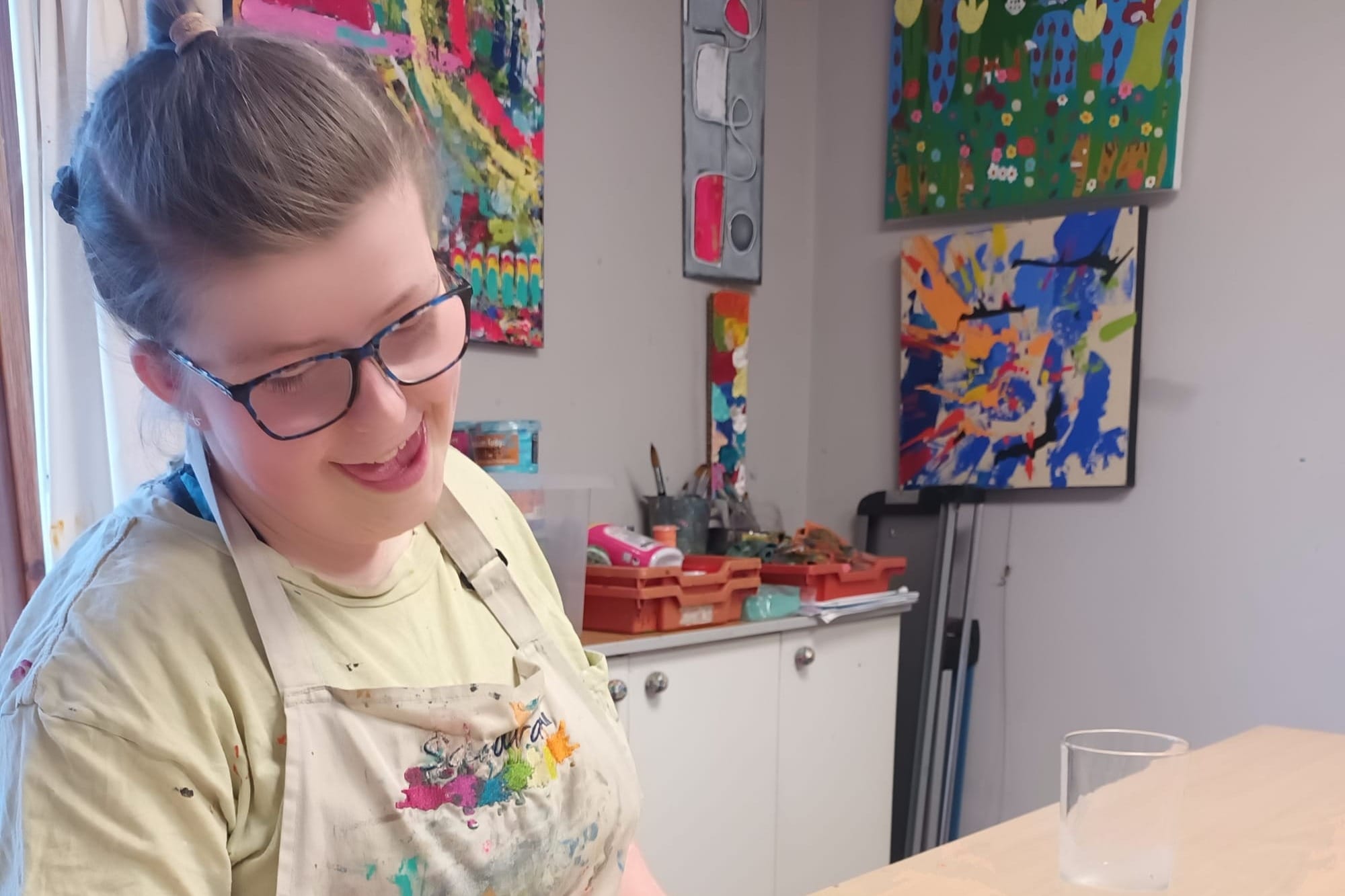
Together, they might search for composition ideas on the internet, look at old work for new inspiration, try a new technique, and are encouraged to follow their interests, whether it’s painting landscapes or animals.
“They have their own skills and I’m facilitating a studio for people who want to make something,” Sandra says.
Coming up to its 10th anniversary, Sandra set up the studio in her dining room after she found herself without a job following the sudden closure of the Royal School for the Deaf. A conversation with her husband planted the seed that she could continue working with people with additional needs, but in a way that suited her better.
“I’m dyslexic and I found the paper work challenging, but working with people who are deaf was my absolute joy,” she says. “[He said we’ll] make it work for you here. I ran [the studio] for three months with support from benefits and I haven’t looked back.”
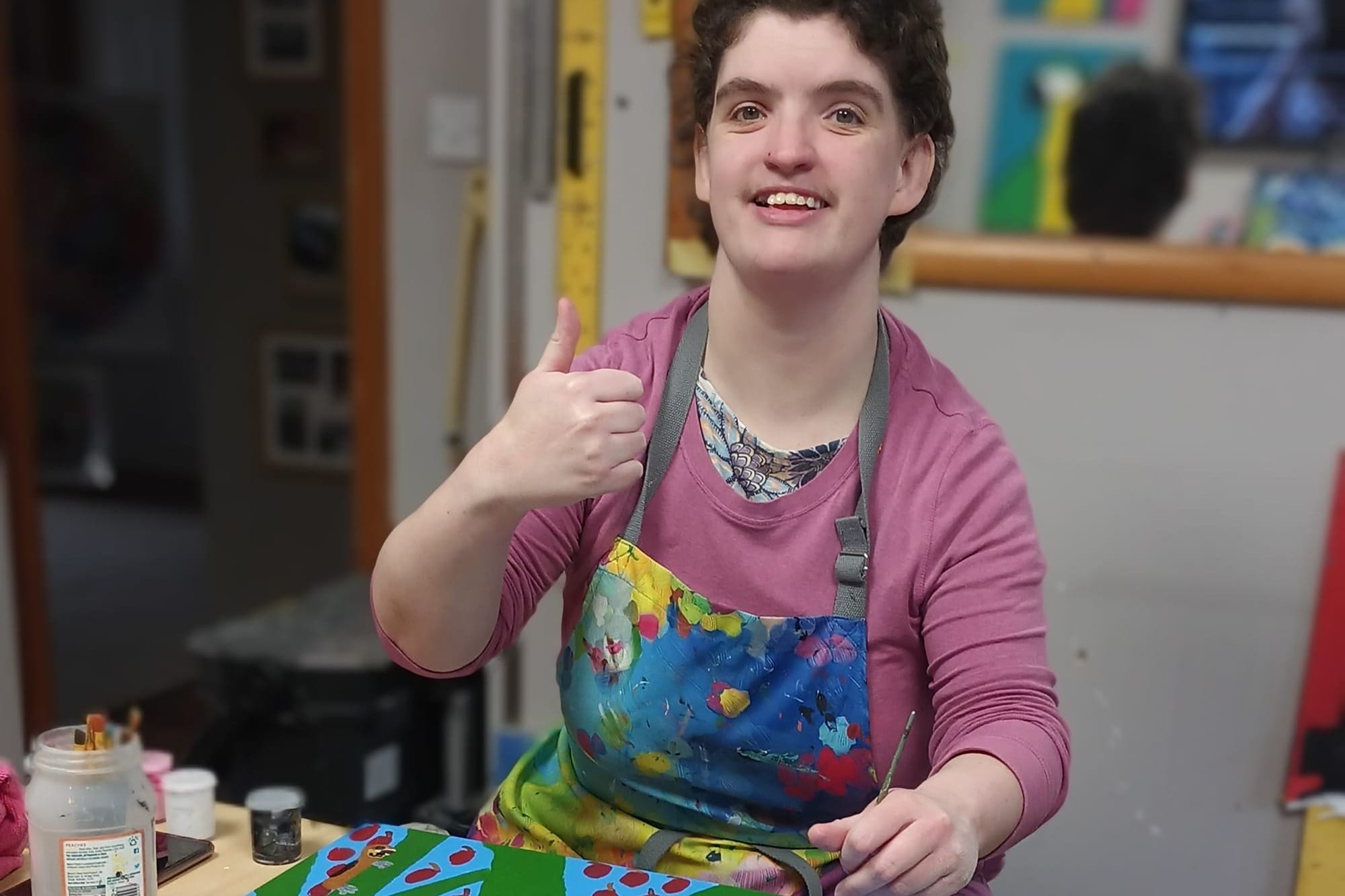
The studio continues to run from Sandra’s old dining room, and having an informal, homely environment was essential for her.
“We wanted [the studio] to be a space where people felt comfortable and relaxed,” she says. “So if they have those interesting vocal sounds and behaviors, they are safe to be who they are in the studio. A lot of people with autism mask in the community, and I don’t want them to. I want them to be themselves and to have fun, be happy and to explore.”
While Art4All artists have exhibited at Turner Contemporary, The Margate School and Royal Academy, with several artists receiving accolades, the studio’s focus is not on output, but rather enjoying the process.
“Art, for me, helps calm my mind. It takes away a lot of anxiety and worry. I believe it helps people who come through the door showing those signs - and you do physically see it.”
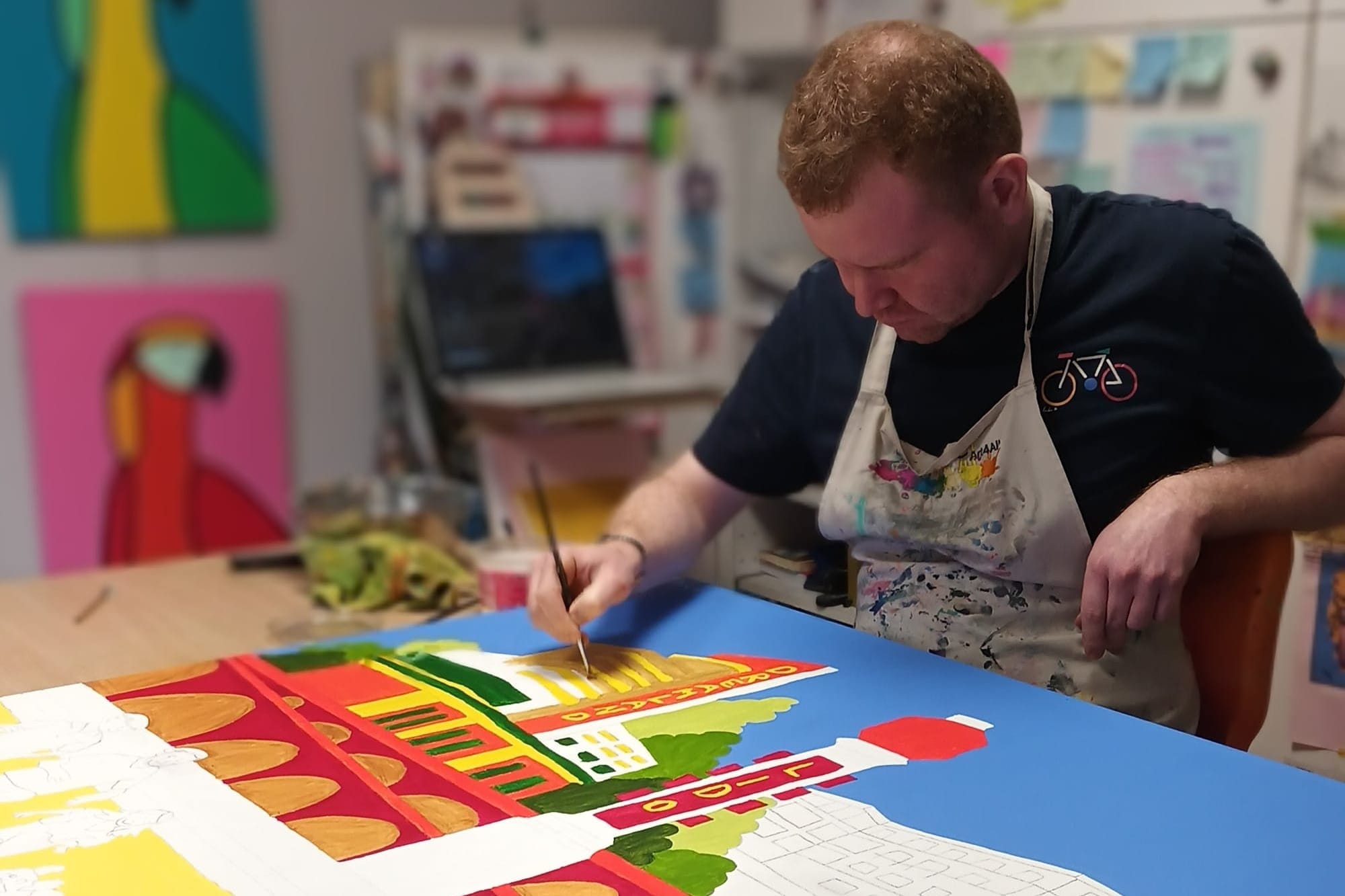
She says that if the only thing achieved during a session is one of the artists working through their stresses by playing around, then “the rest of the day is going to be better for it’, adding: “I used to say as a teacher, ‘if they haven’t learnt anything with me but worked through their anxiety so they can learn later on, then I’ve done my job well.’
“We make what we want in the way we want because it makes us happy,” Sandra continues. “We learn by doing, by exploring, by being inspired by others or visiting a gallery. People are really encouraged [to do what they like] with their practice.”
This year’s TMS exhibition was the studio’s sixth. Over 120 original artworks went on display, with more than 60 sold before the show had wrapped up. Sandra describes the experience as “just wonderful”, and adds that being so well received by such a creative community as Margate has been an amazing experience.
“If we can spread a bit of joy and say ‘look what we can do with what we have’, and bring a little lift to somebody’s day - it’s overwhelmingly joyful.”
For more information, visit sandraart4all.co.uk

